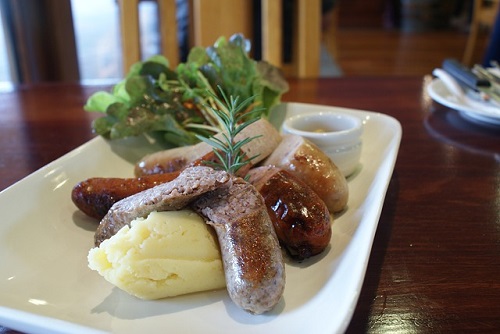Germany’s love affair with sausage is a tale as old as time, deeply rooted in its culture and culinary traditions. Classical German sausage, or “Wurst” as it is commonly known, is not just a food item; it’s a symbol of German heritage and craftsmanship. This article delves into the history, varieties, and cultural significance of these beloved sausages, offering a taste of Germany’s rich culinary landscape.
The story of German sausage stretches back centuries, with each region developing its unique variety. These sausages were initially created out of necessity, to preserve meat before the advent of refrigeration. The use of spices, smoking, and curing methods not only extended the shelf life of the meat but also contributed to the diverse flavors that characterize German sausages today.
In Germany, sausages are more than just a culinary delight; they’re a part of the social fabric. Festivals like Oktoberfest showcase the importance of Wurst in German culture. Additionally, the traditional German “Wurstmarkt” (sausage market) is a testament to the sausage’s role in communal life, offering a platform for both socializing and savoring a variety of sausages.
Classical German sausage is not just a staple of German cuisine; it’s a bridge to the country’s history, culture, and culinary artistry. From the smoky depths of a Knackwurst to the subtle flavors of a Weisswurst, these sausages offer a diverse and delicious journey through Germany’s culinary heartland. Whether you’re a food enthusiast or a curious traveler, exploring the world of classical German sausage is a journey worth taking.
Ingredients:
6 lbs. boneless pork shoulder or pork butt
3 teaspoons sage
2 ½ teaspoons salt
2 teaspoons black pepper
2 teaspoons marjoram
1 ½ teaspoons crushed red chili peppers
½ teaspoon savory
½ teaspoon cayenne chili pepper
¼ teaspoon nutmeg
1 teaspoon allspice
Directions:
Chill the meat before you place it into the grinder. Grind the meat, and then spread it out in oversized bins. Sprinkle the spices over the meat, and work it in with your hands. When the sausage is thoroughly mixed, chill it for about an hour before pushing it through the sausage maker. If it is too cold, it will be too hard on the machine and the casings. If it is too soft, it will be too sticky to work with.
To get the real German taste into your sausage, add onion and caraway seeds to the boiling water or, better yet, boil the sausage in beer. Don’t forget to add some spicy mustard to the table, plus plenty of dark bread. German sausage is great when smeared with mustard and wrapped in a slice of bread with sauerkraut and or with fried onions and peppers added to the mix.
Related Recipes:
German Wurst Guide
Liverwurst
Bratwurst
Mettwurst
German Sausage with Apples Sauerkraut and Onion
German Sausage Soup

